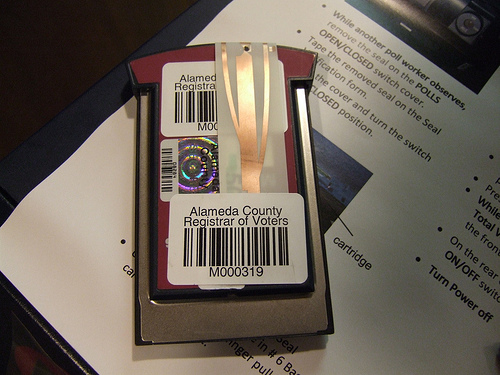RFID Basics
How does it work?
The tags are comprised of what is called an integrated circuit, or IC, and an antenna that work together to store and transmit the data. RFID tags are created in many different sizes and designs. There must be a source of power in order for the information to travel from tag to reader. If a tag is passive, it does not use a battery and the power of the data transmission is supplied by the reader. An active tag uses its own battery to power the transmission.
Any data that is stored on an RFID tag can be protected depending on the tag authoring format. Similar to compact discs, RFID tags are available in read-only or read-write formats. Combination formats are also available and allow a user to restrict certain items as read-only and others as read-write for archiving and storage purposes.
Uses for RFID tags
There are several modern uses for RFID tags other than tracking items being purchased or finding lost pets. Making a payment from a mobile phone, tracking automobiles, using public transportation, and identifying animals for farming are some of the other common purposes for RFID tagging. Here are a few additional scenarios where this technology is used to transmit data.
RFID Tag Guest Wristband
Using an RFID tag on a wristband allows visitors at an attraction park or lodge to charge their purchases directly to their account. It can also serve as a room key.

Courtesy of http://www.flickr.com /
RFID Chip on Running Shoes
This small RFID chip contains information such as the runner’s name, registration number and gender. As the runner crosses a reader strip at the beginning of the race, the chip will record the runner’s start time as well as the time the runner crosses the finish line.

Courtesy of http://www.flickr.com/photos/timwilson/ /
RFID Tag and Antenna on Memory Card
Many voting polls are computerized now and RFID technology allows the data collected from these polls to be securely stored without the possibility for tampering.

Courtesy of http://www.flickr.com/photos/joebeone/
Mandates for RFID
Some large entites that deal with mass shipments, such as Wal-Mart and even the U.S. Department of Defense, now require that their suppliers and vendors use RFID labels to improve tracking. These RFID mandates mainly pertain to pallets, not individual items in the shipments.
Replacing Barcodes
There is an on-going discussion about when and if RFID tags will entirely replace barcode technology. Concerns like cost and the desire of accessibility through the range of possible data sources.The simplicity of the techonology in standard barcodes is an attractive feature that keeps manufacturers using this data format instead of RFID. Economic issues have been blamed for the delay of the adoption of the RFID technology and phasing out bar codes. The likelihood is that bar codes will be augmented by RFID, and not replaced by it. There are an infinite number of places where bar code technology will work, and RFID will not or will be too costly or cumbersome.
